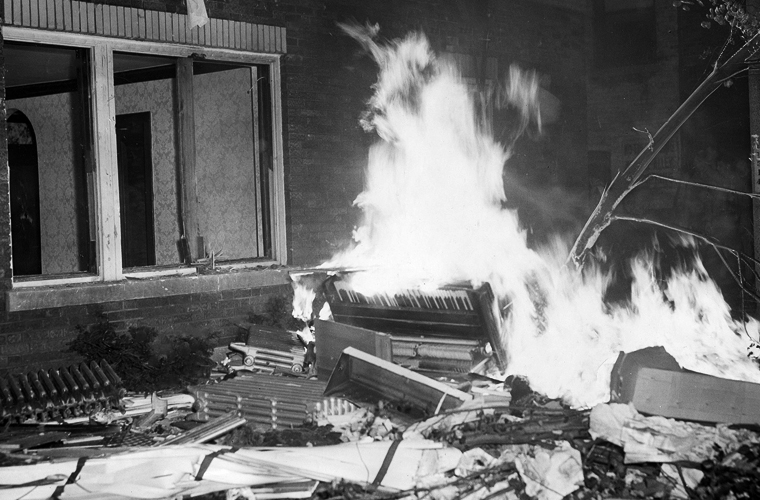The Cicero Riot of 1951 is a significant event in American history that shed light on the racial tensions and discrimination prevalent in the country during that time. Lasting from July 11-12, 1951, the riot was a result of the violent backlash against an African American family who had recently moved into an all-white neighborhood in Cicero, Illinois, a suburb of Chicago. The events leading up to the riot are a stark reminder of the challenges faced by African American families seeking to live in predominantly white communities.
The catalyst for the riot can be traced back to June 1951, when Mrs. Camille DeRose, the owner of an apartment building at 6139-43 W. 19th Street in Cicero, decided to rent an apartment to Henry E. Clark Jr, an African American World War II veteran and graduate of Fisk University, along with his wife, Johnetta Clark, and their two children. This decision to integrate an all-white neighborhood sparked outrage and resistance from the local community.

Before the Clarks‘ arrival, high-ranking officials in Cicero had warned Mrs. DeRose about the potential trouble that would arise if a Black family moved into the apartment building. This warning foreshadowed the hostility and discrimination that the Clarks would face upon their arrival in Cicero. The situation escalated on June 8, 1951, when a moving van containing the Clark family’s furniture was stopped by Cicero police. The police informed Mr. Clark that he had to leave the town or face arrest for “protective custody.” This unjust treatment of the Clarks by law enforcement is a stark example of the systemic racism and discrimination prevalent in American society during that era.






The encounter with the police took a violent turn when twenty officers forcibly grabbed Mr. Clark, striking him eight times as they pushed him towards a waiting car parked across the street. Mr. Clark was then shoved inside the car, where he was warned to leave Cicero or face death. This brutal treatment of the Clarks by law enforcement not only violated their civil rights but also incited fear and intimidation.
The events leading up to the Cicero Riot of 1951 serve as a poignant reminder of the racial tension and discrimination that plagued American society during that time. The violent response to the mere presence of an African American family in an all-white neighborhood reflects the deep-seated prejudice and hostility towards racial integration. The Cicero Riot of 1951 stands as a testament to the struggles faced by African American families seeking to live in predominantly white communities and the violent resistance they encountered. The riot serves as a somber reminder of the long and arduous journey toward racial equality and justice in America.
In conclusion, the Cicero Riot of 1951 is a dark chapter in American history that highlights the pervasive racism and discrimination faced by African American families seeking to live in predominantly white neighborhoods. The violent backlash against the Clark family’s presence in Cicero serves as a stark reminder of the challenges and injustices endured by marginalized communities. It is imperative to remember and reflect on this event as we continue to strive for a more inclusive and equitable society.

